Development of Algorithms for Identifying Parameters of the Maritime Vessel Motion Model in Operating Conditions with Elements of Intellectual Analysis
Abstract
:1. Introduction
2. Research Objective
3. Synthesis of Algorithms for Estimating Ship Parameters
4. Estimation of Parameters for Rectilinear Motion
5. Estimation of Parameters during Circulation
6. Accuracy Analysis of the Estimation Algorithms
7. Conclusions
Author Contributions
Funding
Institutional Review Board Statement
Informed Consent Statement
Data Availability Statement
Conflicts of Interest
References
- Naus, K.; Wąż, M.; Szymak, P.; Gucma, L.; Gucma, M. Assessment of ship position estimation accuracy based on radar navigation mark echoes identified in an Electronic Navigational Chart. Measurement 2021, 169, 108630. [Google Scholar] [CrossRef]
- Vinogradov, V.N.; Ivanovsky, N.V. Synthesis of algorithms for identification of random parameters and estimation of current vessel motion parameters. Bull. Volga State Acad. Water Transp. 2018, 4. [Google Scholar]
- Vinogradov, V.N.; Ivanovsky, N.V. Synthesis of the ship control algorithm in a given area on the basis of a complex risk criterion. Bull. Volga State Acad. Water Transp. 2019, 1. [Google Scholar]
- Vaitkunskas, Y.I. Handbook of the Ship Theory; Shipbuilding: Saint Petersburg, Russia, 1985; Volume 3, p. 256. [Google Scholar]
- Zhilenkov, A.; Chernyi, S.; Firsov, A. Autonomous Underwater Robot Fuzzy Motion Control System with Parametric Uncertainties. Designs 2021, 5, 24. [Google Scholar] [CrossRef]
- Hernyi, S.G.; Vyngra, A.V.; Novak, B.P. Physical modeling of an automated ship’s list control system. J. Intell. Fuzzy Syst. 2020, 39, 8399–8408. [Google Scholar] [CrossRef]
- Mishra, N.; Hussain, R.; Goyal, D.; Sharma, A.D. Time and efficiency comparison study of line following and RFID navigation technology with autonomous navigation using SLAM. Mater. Today Proc. 2021, 263. [Google Scholar] [CrossRef]
- Wang, W.; Zhang, B.; Wu, K.; Chepinskiy, S.; Zhilenkov, A.; Chernyi, S.; Krasnov, A. A visual terrain classification method for mobile robots’ navigation based on convolutional neural network and support vector machine. Trans. Inst. Meas. Control 2021, 014233122098791. [Google Scholar] [CrossRef]
- Wang, L.; Liu, Q.; Dong, S.; Soares, C.G. Effectiveness assessment of ship navigation safety countermeasures using fuzzy cognitive maps. Saf. Sci. 2019, 117, 352–364. [Google Scholar] [CrossRef]
- He, J.; Zhao, H. A new smart safety navigation system for cycling based on audio technology. Saf. Sci. 2020, 124, 104583. [Google Scholar] [CrossRef]
- Chernyi, S.G.; Erofeev, P.; Novak, B.; Emelianov, V. Investigation of the Mechanical and Electromechanical Starting Characteristics of an Asynchronous Electric Drive of a Two-Piston Marine Compressor. J. Mar. Sci. Eng. 2021, 9, 207. [Google Scholar] [CrossRef]

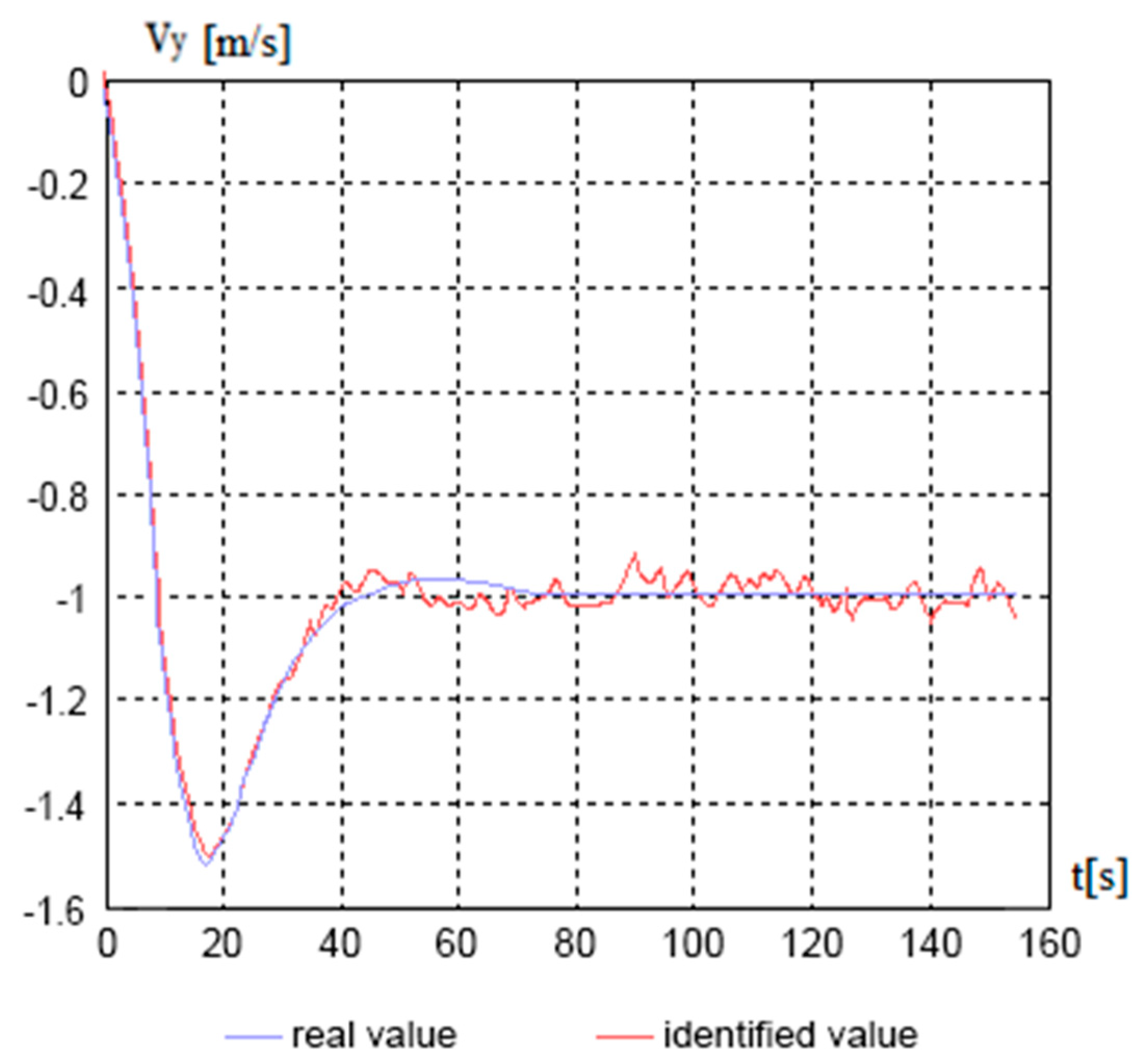
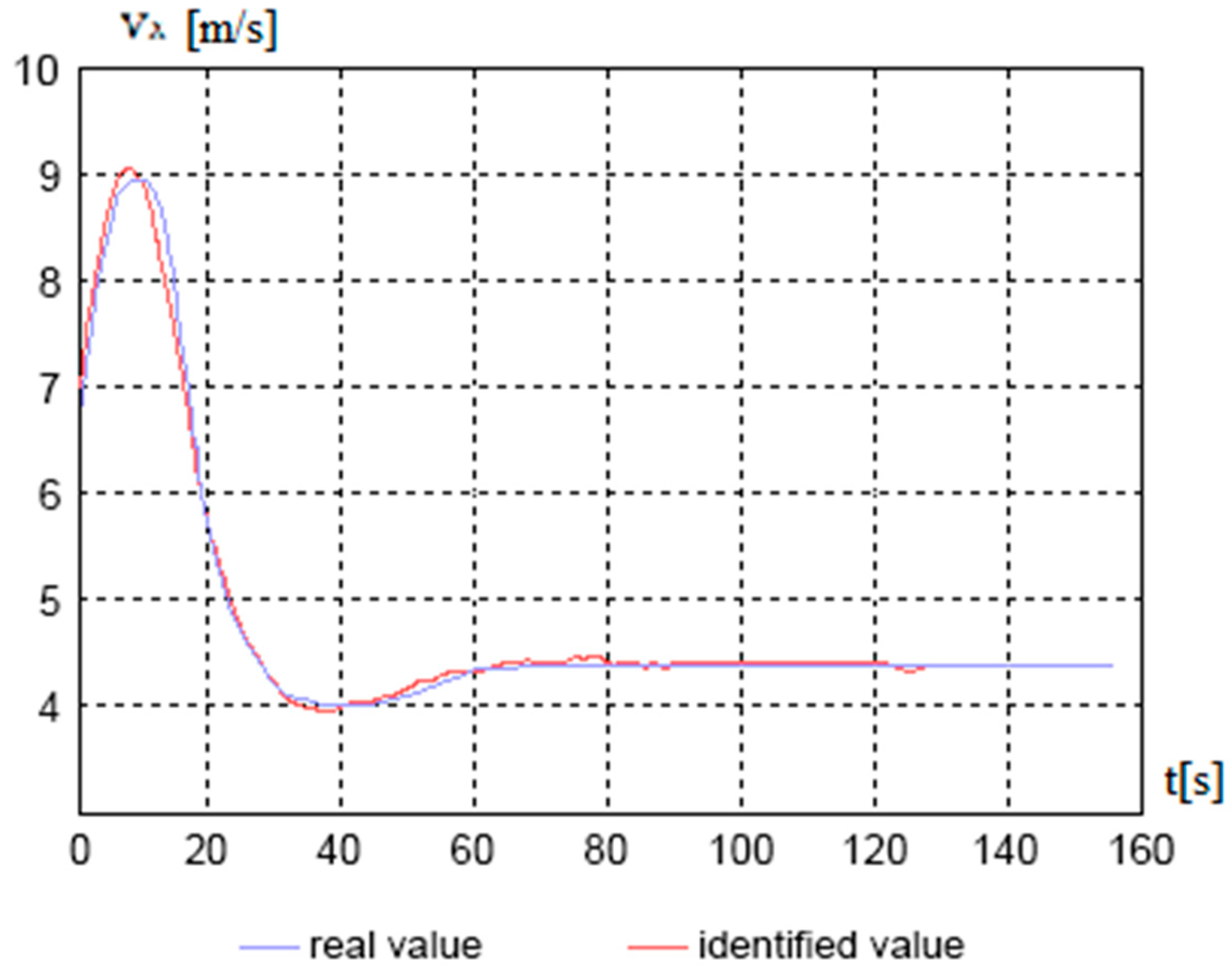
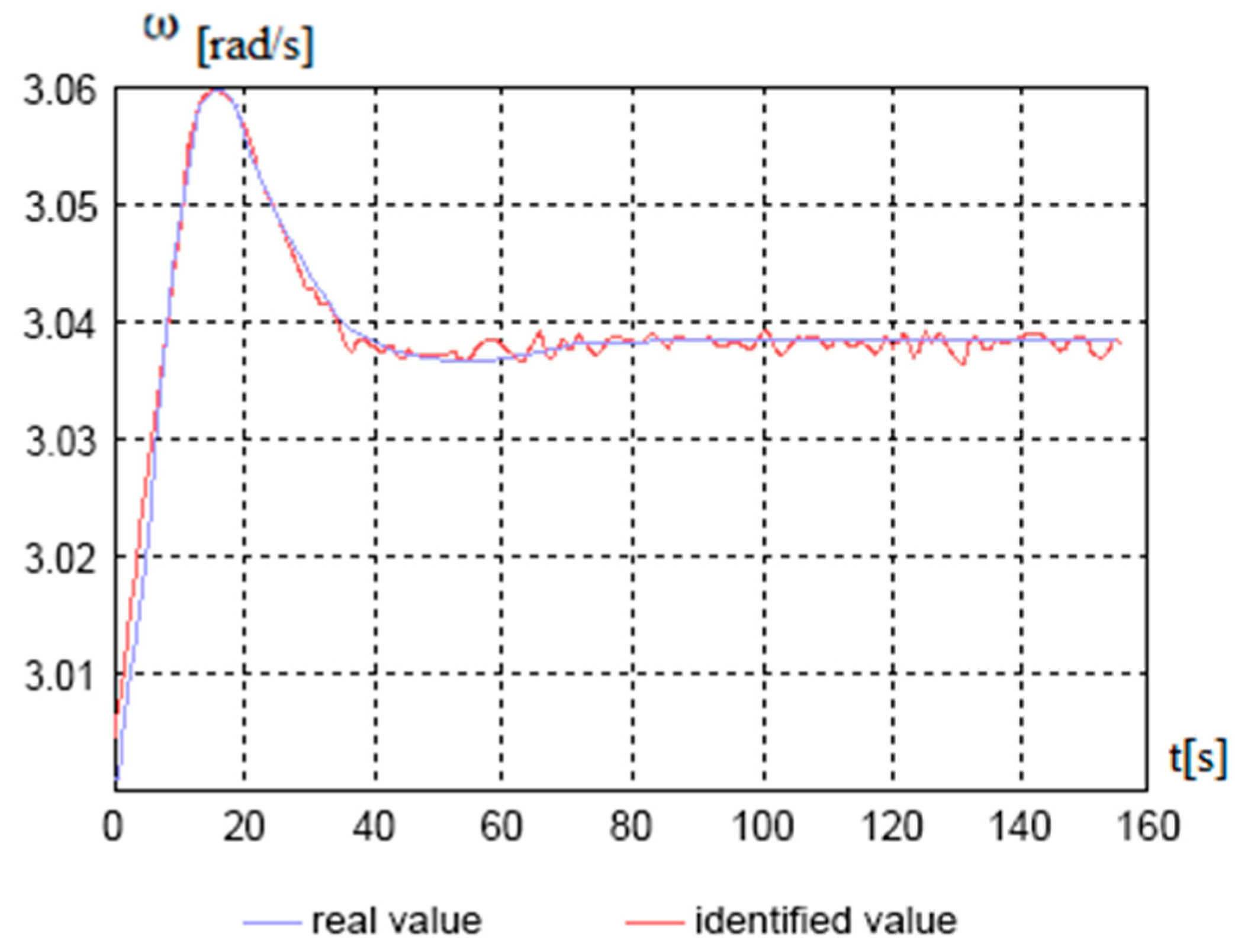

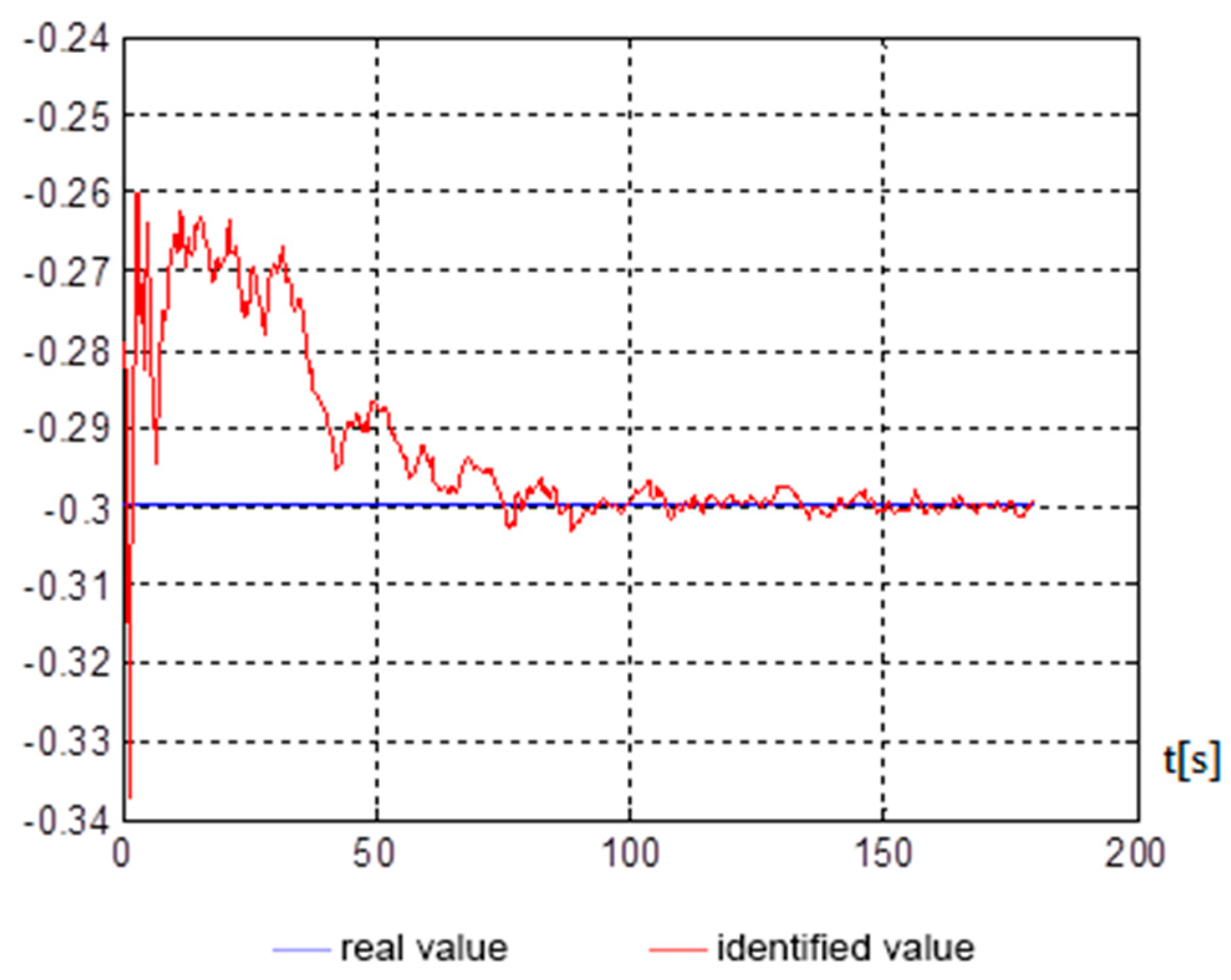
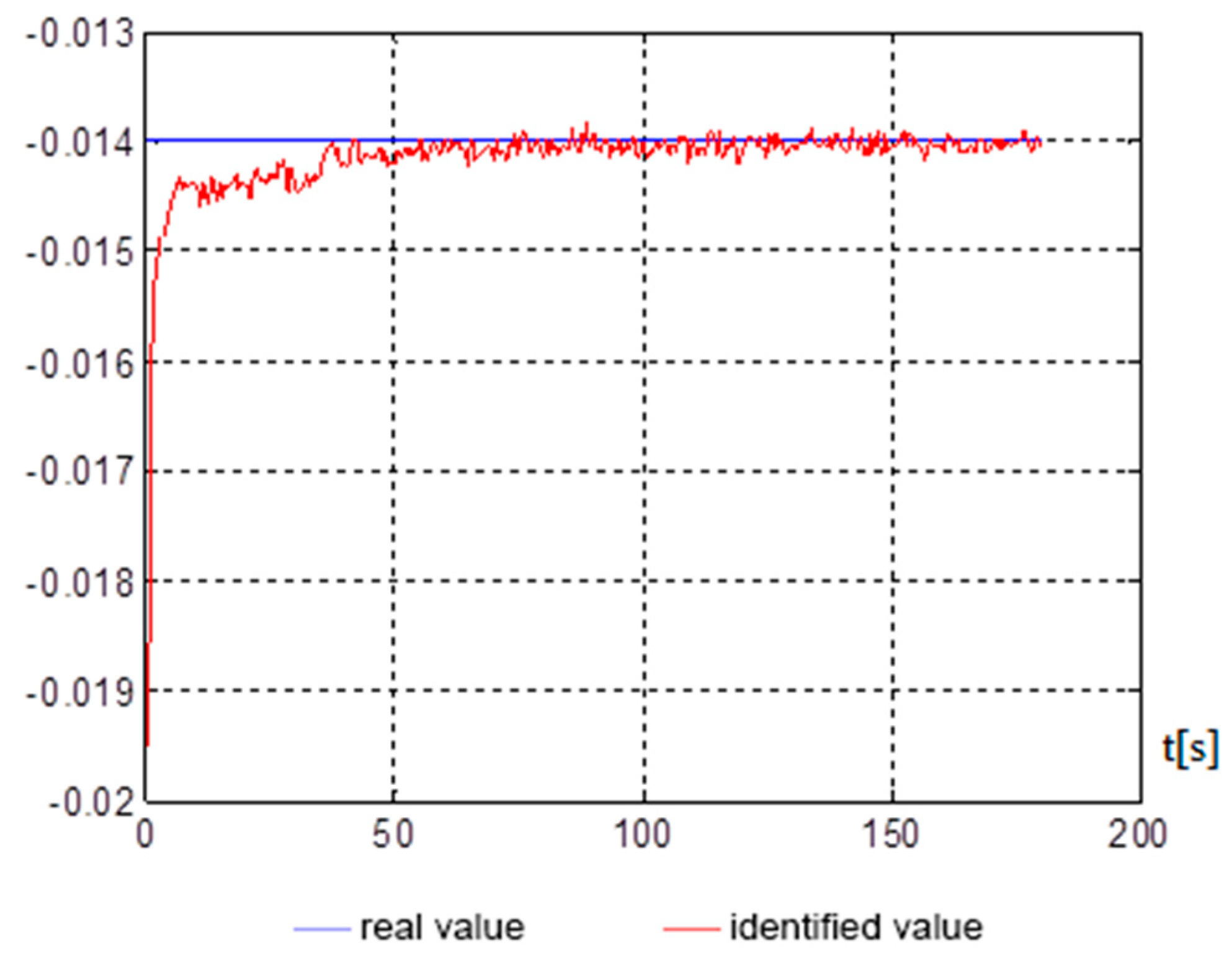
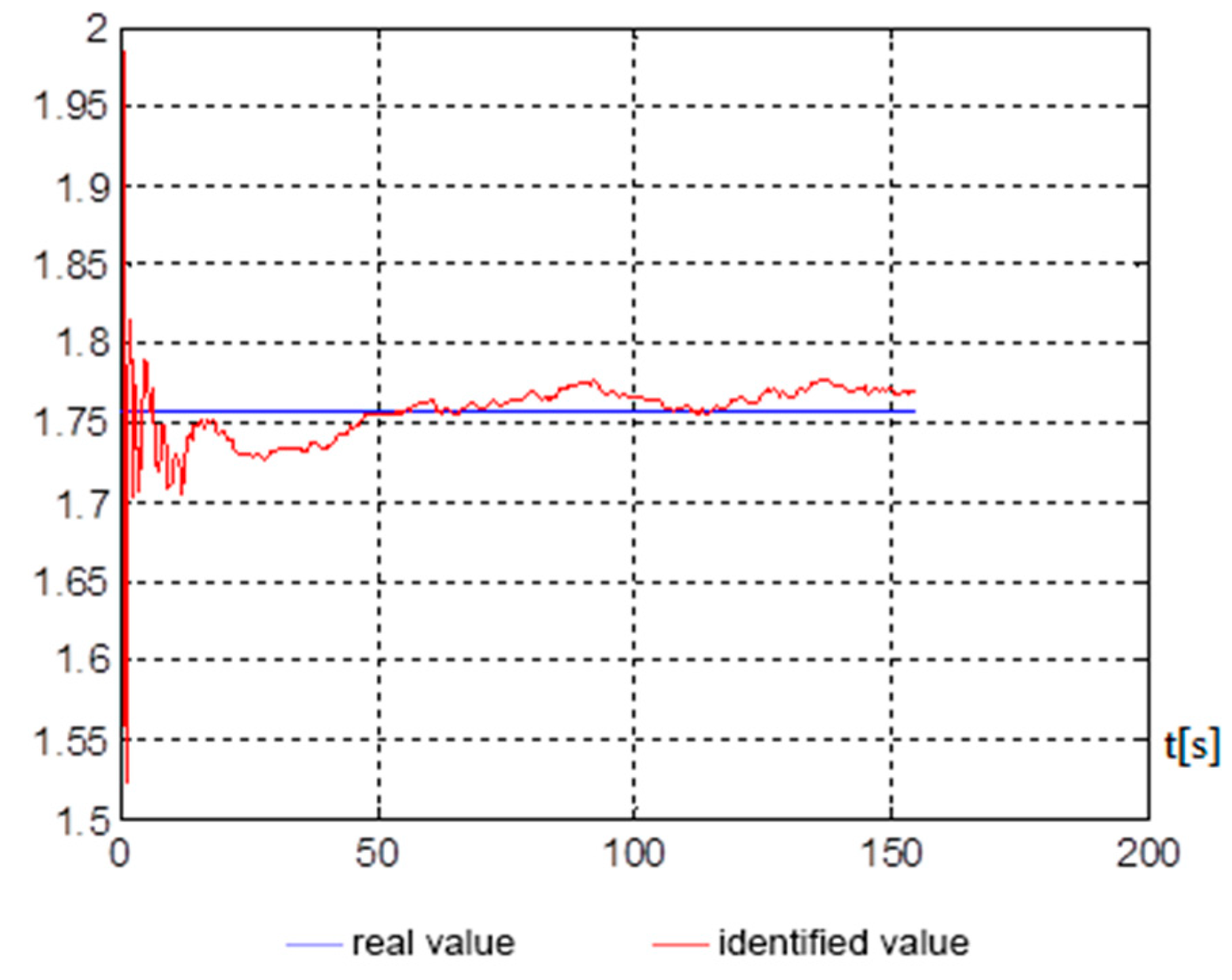
| Name | m11[tf*s2/m] m22[tf*s2/m] | Jz[tf*s2*m] l26[tf*s2] | L [m] Lr [m] | Cr [m2] Sr [m2] | Ap [m2] Scp [m2] | m1 m2 | Cβ Cωβ | Cωω nv[r/s] |
|---|---|---|---|---|---|---|---|---|
| value | 232 380.26 | 133,630 −539.91 | 81.7 40.5 | 0.942 8.1 | 331.7 1065 | 0.0604 0.003378 | 0.283 0.1576 | −0.097836 4.8 |
Publisher’s Note: MDPI stays neutral with regard to jurisdictional claims in published maps and institutional affiliations. |
© 2021 by the authors. Licensee MDPI, Basel, Switzerland. This article is an open access article distributed under the terms and conditions of the Creative Commons Attribution (CC BY) license (https://creativecommons.org/licenses/by/4.0/).
Share and Cite
Ivanovskii, N.; Chernyi, S.G.; Zhilenkov, A.; Emelianov, V. Development of Algorithms for Identifying Parameters of the Maritime Vessel Motion Model in Operating Conditions with Elements of Intellectual Analysis. J. Mar. Sci. Eng. 2021, 9, 418. https://doi.org/10.3390/jmse9040418
Ivanovskii N, Chernyi SG, Zhilenkov A, Emelianov V. Development of Algorithms for Identifying Parameters of the Maritime Vessel Motion Model in Operating Conditions with Elements of Intellectual Analysis. Journal of Marine Science and Engineering. 2021; 9(4):418. https://doi.org/10.3390/jmse9040418
Chicago/Turabian StyleIvanovskii, Nikolay, Sergei G. Chernyi, Anton Zhilenkov, and Vitalii Emelianov. 2021. "Development of Algorithms for Identifying Parameters of the Maritime Vessel Motion Model in Operating Conditions with Elements of Intellectual Analysis" Journal of Marine Science and Engineering 9, no. 4: 418. https://doi.org/10.3390/jmse9040418
APA StyleIvanovskii, N., Chernyi, S. G., Zhilenkov, A., & Emelianov, V. (2021). Development of Algorithms for Identifying Parameters of the Maritime Vessel Motion Model in Operating Conditions with Elements of Intellectual Analysis. Journal of Marine Science and Engineering, 9(4), 418. https://doi.org/10.3390/jmse9040418








